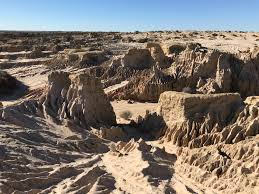As it turned out, there would be a great deal else to be puzzled about, and one of the most puzzling findings of all would come from Thorne's own part of the world, in the outback of Australia. In 1968, a geologist named Jim Bowler was poking around on a long-dried lakebed called Mungo in a parched and lonely corner of western New South Wales when something very unexpected caught his eye. Sticking out of a crescent-shaped sand ridge of a type known as a lunette were some human bones. At the time, it was believed that humans had been in Australia for no more than 8,000 years, but Mungo had been dry for 12,000 years. So what was anyone doing in such an inhospitable place?

The answer, provided by carbon dating, was that the bones' owner had lived there when Lake Mungo was a much more agreeable habitat, a dozen miles long, full of water and fish, fringed by pleasant groves of casuarina trees. To everyone's astonishment, the bones turned out to be 23,000 years old. Other bones found nearby were dated to as much as 60,000 years. This was unexpected to the point of seeming practically impossible. At no time since hominids first arose on Earth has Australia not been an island. Any human beings who arrived there must have come by sea, in large enough numbers to start a breeding population, after crossing sixty miles or more of open water without having any way of knowing that a convenient landfall awaited them. Having landed, the Mungo people had then found their way more than two thousand miles inland from Australia's north coast—the presumed point of entry—which suggests, according to a report in the Proceedings of the National Academy of Sciences, "that people may have first arrived substantially earlier than 60,000 years ago."












